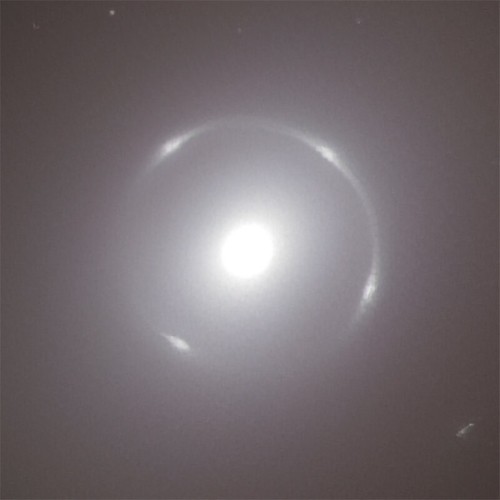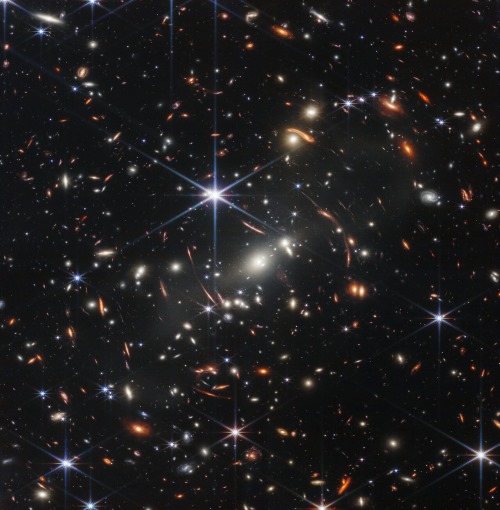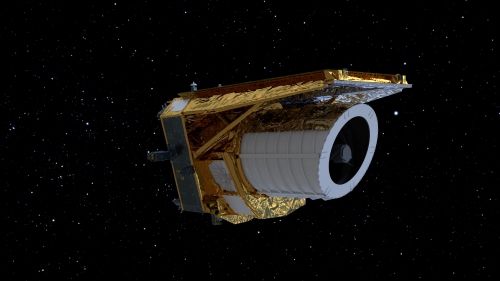Euclid, the European Space Agency’s (ESA) ambitious space telescope, has made a groundbreaking discovery—an extraordinary Einstein Ring—right in our cosmic neighborhood. A rare Einstein ring around a galaxy located nearly 590 million light-years from Earth. This finding provides valuable insights into the nature of gravitational lensing, dark matter, and the expansion of the universe.
Our dark Universe detective 🕵️ @ESA_Euclid has discovered a stunning Einstein ring 💍
— ESA Science (@esascience) February 10, 2025
It surrounds galaxy NGC 6505, which is acting as a gravitational lens, bending light from a distant galaxy behind it 👉 https://t.co/WvAxhOsru1 pic.twitter.com/oVdBIQOEq6
Mission Overview
| Mission Name | Launch Date | Objective | Key Instrument |
| Euclid | 1 July 2023 | Studying dark matter, dark energy, and cosmic expansion | High-resolution imaging and spectroscopic analysis |
Before officially beginning its mission, Euclid underwent early testing in September 2023. During this phase, a blurry image caught the attention of Euclid Archive Scientist Bruno Altieri, revealing the presence of a significant cosmic event.
Details of the Discovery
| Feature | Details |
| Foreground Galaxy | NGC 6505 |
| Distance from Earth | ~590 million light-years |
| Background Galaxy | Newly discovered, unnamed |
| Distance of Background Galaxy | 4.42 billion light-years |
| Detection Method | High-resolution imaging by Euclid |
Opinions given by Experts
Bruno Altieri (Euclid Archive Scientist)
"Right from my initial observation, I noticed something out of the ordinary. With further analysis, the formation of a perfect Einstein Ring became evident. As someone deeply fascinated by gravitational lensing, this was an extraordinary moment."
Conor O’Riordan (Max Planck Institute for Astrophysics)
"All strong lenses are rare and scientifically valuable. However, this one is particularly special due to its proximity and its nearly perfect alignment, making it visually striking."
Valeria Pettorino (ESA Euclid Project Scientist)
"It's amazing that this ring was discovered in a galaxy that has been well-researched since it was first seen in 1884. This showcases Euclid’s ability to uncover new details even in familiar cosmic structures."
Historical Context of Einstein's Ring
The first Einstein ring was discovered in 1987. Since then, multiple rings have been identified, though their exact number remains unknown. Observations of these rings are possible only with high-powered space telescopes like Euclid and Hubble.
What is an Einstein Ring?

Source: esa
An Einstein Ring is a rare phenomenon resulting from gravitational lensing. Einstein's Ring is a nearly perfect circle of light that forms when a distant galaxy aligns precisely with a massive gravitational lens in the foreground. When light from a distant galaxy passes through a massive foreground galaxy, its path bends due to gravity, creating a symmetrical ring-like structure. This phenomenon was predicted by Albert Einstein's General Theory of Relativity.
Albert Einstein's General Theory of Relativity:

Source: space.com
Einstein’s General Theory of Relativity (1915) explains gravity as the bending of space-time by massive objects. This means planets, stars, and even light follow curved paths due to this warping. It improved Newton’s gravity theory by explaining Mercury’s orbit and predicting phenomena like Gravitational Lensing (light bending around massive objects) and Gravitational waves (ripples in space-time). Gravitational waves were confirmed in 2015 by LIGO (Laser Interferometer Gravitational-Wave Observatory is a network of ground-based observatories that detect gravitational waves from space
How Does an Einstein Ring Form?
.jpg)
Source: esa
Step-by-Step Process:
- Light Emission: A distant galaxy emits light in all directions.
- Gravitational Lensing: A massive foreground galaxy (NGC 6505) bends the light due to its immense gravitational field.
- Ring Formation: If perfectly aligned, the light encircles the foreground galaxy, forming a bright Einstein Ring.
Why Are Einstein Rings Important?
Einstein rings are extremely rare, with fewer than 1% of galaxies exhibiting this phenomenon. Their study holds immense scientific value:
- Understanding Dark Matter: Dark matter, which makes up approximately 85% of the universe’s total matter, does not interact with light but has gravitational effects. Gravitational lensing, as seen in Einstein's rings, helps astronomers indirectly detect and study dark matter.
- Studying Distant Galaxies: The magnification effect of gravitational lensing allows scientists to observe distant galaxies that would otherwise be too faint to detect. This helps in understanding the evolution of galaxies over billions of years.
- Measuring the Expansion of the Universe: The stretching of space between Earth and distant galaxies provides crucial insights into cosmic expansion. By analyzing Einstein's rings, researchers can refine their models of the universe’s growth.
What Is Gravitational Lensing?

Source: esawebb
Gravitational lensing is a phenomenon where massive objects, such as galaxy clusters, bend and magnify light from distant celestial bodies behind them. This effect occurs due to the gravitational field of these massive structures, which warps the fabric of space-time, as described by Einstein's general theory of relativity.
How Does Gravitational Lensing Work?
When light from a distant galaxy passes through the gravitational field of an intervening massive object, the light is bent, leading to magnified and distorted images of the background galaxy. This effect acts like a cosmic magnifying glass, allowing astronomers to study distant and faint galaxies that would otherwise be invisible.
What Are the Different Types of Gravitational Lensing?
- Strong Lensing – Occurs when a massive object significantly bends light, producing multiple images, arcs, or even complete Einstein rings of the background galaxy.
- Weak Lensing – Causes slight distortions in the shape of background galaxies, helping astronomers map dark matter distribution.
- Microlensing – This happens when a single star or a smaller object briefly magnifies the light of a background star without creating multiple images.
Euclid’s Role in Future Discoveries

Source: esa
Euclid is set to revolutionize astrophysics by:
- Mapping over a third of the sky and analyzing billions of galaxies.
- Providing high-resolution images that will refine our understanding of dark matter, dark energy, and cosmic expansion.
- Detecting both strong and weak gravitational lensing effects to create the most detailed 3D map of the Universe ever constructed.
Next Steps
Euclid officially began its detailed sky survey on 14 February 2024. The discovery of this Einstein Ring so early in the mission suggests that many more groundbreaking findings are on the horizon. Scientists anticipate uncovering thousands of previously unknown cosmic structures that could reshape our understanding of the Universe.
Conclusion
The discovery of the Einstein Ring around NGC 6505 marks a significant milestone for the Euclid mission. This finding highlights the telescope’s incredible capability to reveal hidden cosmic phenomena, even in well-studied regions of space. As Euclid continues its mission, it promises to unlock deeper insights into the fundamental forces shaping our Universe.
Comments
All Comments (0)
Join the conversation